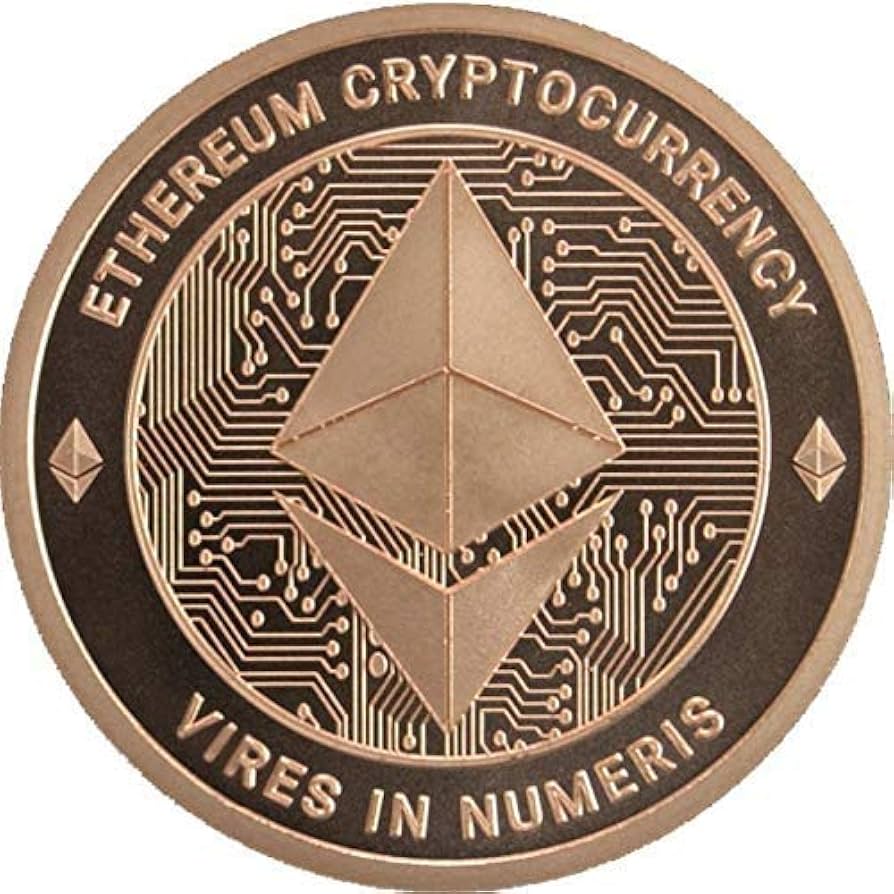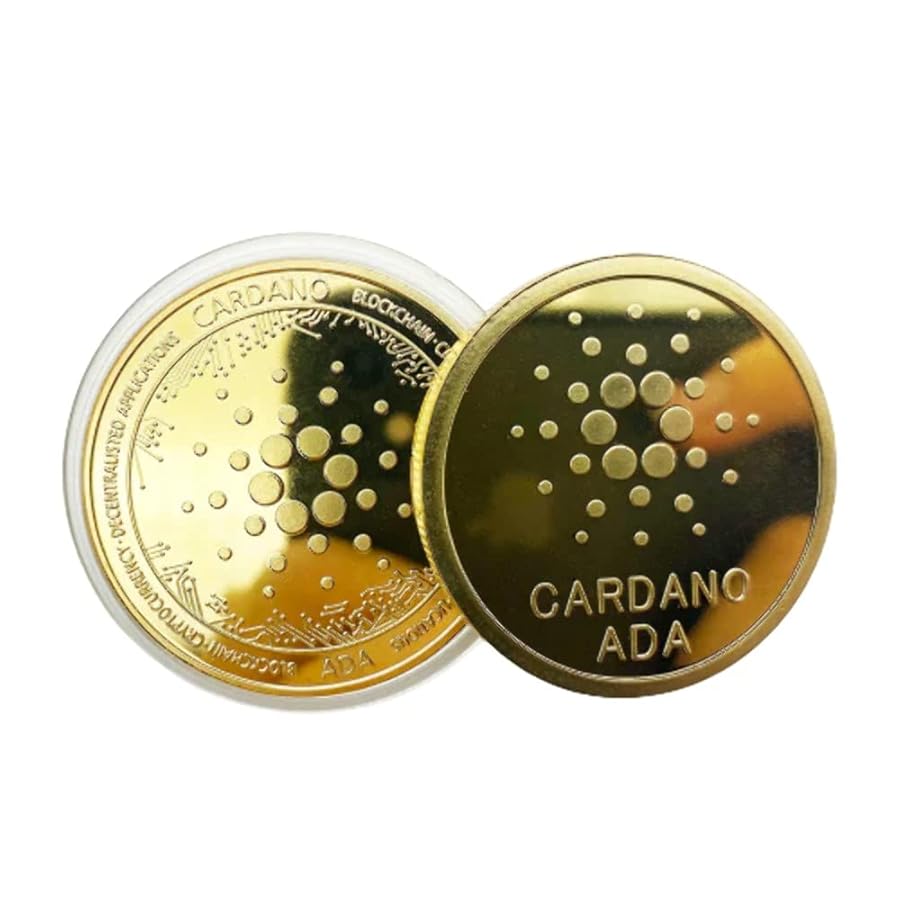
1) Ethereum network (ETH)

ETH, or Ether, is the native cryptocurrency of the Ethereum network. It's the second-largest cryptocurrency by market capitalization and is used to pay for transactions and services on the Ethereum blockchain. Think of Ether as the "fuel" that powers the Ethereum network.
Here's a more detailed explanation:
- Ethereum is a platform:It's a decentralized platform that enables the creation of smart contracts and decentralized applications (dApps).
- Ether is the currency:Ether (ETH) is the digital currency used on the Ethereum network to pay for transactions, deploy smart contracts, and access applications.
- Smart Contracts and dApps:Ethereum allows developers to build and deploy applications that run on the blockchain, enabling various use cases beyond simple transactions.
- Decentralized and secure:Ethereum's blockchain technology aims to provide a more secure and transparent way to manage digital assets and applications compared to traditional systems.
- "Gas" for the network:The term "gas" is often used to describe the cost of using the Ethereum network, and this cost is paid in Ether.
- Different from Bitcoin:While both are cryptocurrencies, Ethereum was designed with a broader vision to facilitate the development of decentralized applications and smart contracts, whereas Bitcoin primarily focuses on being a digital currency.
2) Solona (SOL)

Solana is a high-performance blockchain platform designed for speed, scalability, and low transaction costs, enabling the development of decentralized applications and smart contracts. Its native cryptocurrency is SOL, which is used for transaction fees and securing the network. Solana differentiates itself through its unique consensus mechanism, Proof of History (PoH), which allows for faster transaction processing compared to some other blockchains like Ethereum.
Here's a more detailed breakdown:
- Speed and Scalability:Solana is known for its ability to handle a high volume of transactions per second, making it suitable for various applications requiring fast and efficient processing.
- Low Transaction Costs:Solana aims to keep transaction fees minimal, making it accessible for both developers and users.
- Decentralized Applications (dApps):Solana serves as a platform for building and deploying dApps, similar to Ethereum, but with a focus on speed and scalability.
- Proof of History (PoH):This unique consensus mechanism, combined with other technologies, allows Solana to achieve its high throughput and efficiency.
- Native Cryptocurrency (SOL):SOL is the digital asset used within the Solana ecosystem for various purposes, including transaction fees and staking.
- Ecosystem:Solana has a growing ecosystem of projects and developers building on its platform, including decentralized exchanges (DEXs), non-fungible token (NFT) projects, and more.
3) Cardona (ADA)

Cardano is a blockchain platform and its native cryptocurrency is called ADA. It's a third-generation, proof-of-stake blockchain designed to be scalable, sustainable, and flexible. Cardano aims to solve issues like scalability and high energy consumption faced by earlier blockchains like Bitcoin and Ethereum.
Here's a more detailed breakdown:
- Decentralized and Scalable:Cardano is a decentralized platform, meaning it's not controlled by a single entity. It uses a proof-of-stake (PoS) consensus mechanism called Ouroboros, which is more energy-efficient than proof-of-work systems.
- Smart Contracts and dApps:Cardano supports smart contracts, allowing developers to build decentralized applications (dApps) on the platform.
- ADA Token:The ADA token is used for various purposes within the Cardano ecosystem:
- Transactions: ADA is used to send and receive payments on the Cardano blockchain.
- Staking: Users can stake their ADA tokens to participate in the network's consensus mechanism and earn rewards.
- Governance: ADA holders can participate in the governance of the Cardano network.
- Development Stages:Cardano's development is structured in phases:
- Byron: The initial phase focused on basic functionality like ADA transfers.
- Shelley: Decentralization with community-run nodes was emphasized.
- Goguen: Smart contracts were enabled.
- Basho: Focus on scalability and interoperability through sidechains.
- Voltaire: The final phase will introduce governance and treasury management.
- Scientific Approach:Cardano is known for its rigorous peer-reviewed development process, relying on academic research and a scientific philosophy.
4) Chainlink (LINK)

Chainlink (LINK) is a cryptocurrency and a decentralized oracle network. It enables smart contracts on blockchains to securely access real-world data and external systems. Essentially, it acts as a bridge between blockchains and the off-chain world.
Here's a more detailed explanation:
What are Oracles?
- Oracles are intermediaries that provide smart contracts with external data.
- Smart contracts, by their nature, exist on a blockchain and can only access information within that blockchain.
- Oracles bridge this gap by fetching data from external sources (like APIs, websites, or other blockchains) and making it available to smart contracts.
Why is Chainlink needed?
- Many real-world applications of blockchain technology require access to external data.
- For example, a smart contract for insurance payouts might need to access real-time weather data to determine if a claim is valid.
- Chainlink provides a secure and reliable way to obtain this data.
How does Chainlink work?
- 1. Service Level Agreement (SLA):A user defines their data requirements (what data they need, from what source, etc.) in an SLA.
- 2. Oracle Selection:The Chainlink network matches the user with suitable oracle node operators who can provide the data.
- 3. Data Retrieval and Delivery:These oracles retrieve the data from the specified sources and deliver it to the smart contract.
- 4. LINK Token:The LINK token is used to pay oracle node operators for their services and to participate in the network.
Key features of Chainlink:
- Decentralized: Chainlink is not controlled by a single entity, making it more secure and reliable.
- Secure: Chainlink uses various techniques to ensure the data it provides is accurate and tamper-proof.
- Flexible: Chainlink supports a wide range of data sources and use cases.
- Scalable: Chainlink can handle a large number of requests and transactions.
In essence, Chainlink is a crucial piece of the puzzle for bringing real-world applications to blockchain technology by enabling smart contracts to interact with off-chain data in a secure and reliable way.
5) Ripple (XRP)

Ripple, often referred to as XRP, is both a cryptocurrency and a digital payment network. It was created to facilitate fast and low-cost international transactions, especially for banks and financial institutions. XRP is the native cryptocurrency of the Ripple network.
Here's a more detailed breakdown:
- Payment Network:Ripple provides a platform for financial institutions to conduct cross-border transactions, allowing for faster and cheaper settlement compared to traditional methods like SWIFT.
- Cryptocurrency (XRP):XRP is the digital asset that operates on the Ripple network. It can be used to facilitate payments and is also used as a bridge currency for converting between different fiat currencies.
- Key Differences from Bitcoin:Unlike Bitcoin, XRP is pre-mined and not mined by users. Additionally, Ripple's consensus mechanism is different from Bitcoin's proof-of-work.
- Ripple (the company):Ripple Labs (now known as Ripple) is the company behind the technology and the development of the XRP Ledger.
- Use Cases:Ripple's technology is used for various purposes, including cross-border payments, remittances, and liquidity solutions for businesses.
- Decentralization:While Ripple (the company) develops the technology, XRP itself operates on a decentralized ledger, the XRP Ledger, which is maintained by a network of validators.
Before You Invest in Crypto, Know the Risks !
Cryptocurrency, or crypto, is virtual or digital assets purchased with real money ($, £) traded on blockchain technology. It does not have all the values of real or fiat currencies. Cryptocurrencies, like Bitcoin and Ethereum, are different from stocks and real money. Crypto is not regulated like stocks or insured like real money in banks. Crypto’s high risks can offer big rewards or huge losses.
Did You Know that Minority Investors are Often Targeted by Crypto Scammers?
- In a recent Pew Research Center survey, 24 percent of Asian adults and 21 percent of Black or Hispanic adults say they have invested in or used a cryptocurrency, compared with just 14 percent of White adults. Overall, data shows 17 percent of US adults fall into one of these categories.
- Black investors are also more likely than white investors to believe investments in cryptocurrency are both safe—33% vs. 18%—and regulated by the government—30% vs. 14% (Ariel-Schwab Black Investor Survey).
- Crypto targets young minority investors through social media under the guise of “democratize finance” that removes barriers of invasive credit checks or income requirements promising high returns to build wealth (CNN).
DC Residents Should Beware of Crypto Scams
- Crypto Wiped Out $2 trillion in 2022 (World Economic Forum).
- If it sounds and looks too good to be true, it could be a scam. Beware of investment opportunities that use phrases like Get Rich Quick, Don’t Miss Out, High Returns Guaranteed, Buy Digital Coins Now.
- Avoid unsolicited offers on CashApp or social media.
- It could also be a scam if you are told “it’s as good as cash.” Crypto is not protected or regulated like cash or the US dollar.
- Crypto is volatile and a substantial risk. Invest only what you can afford to lose.
- Crypto scammers are experts at getting you to buy their digital assets.
- Be wary of “finfluencers” who get paid by crypto companies whether you lose money or not.
DISB has taken Actions Against Crypto Companies and Exchanges to Protect Residents
disb.dc.gov/publications?keys=SEC%20ADO&type=722&sort_by=field_date_value&sort_order=DESC
Alternatives to Crypto Investing
Index funds can outperform cryptocurrencies. And while index funds don’t guarantee profits (no investment does), they are less risky and more appropriate for most investors.
Be an Informed Investor
- disb.dc.gov/page/hazards-investing-cryptocurrency
- disb.dc.gov/page/beware-financial-influencers
- investor.gov/additional-resources/spotlight/crypto-assets
- nasaa.org/44848/informed-investor-advisory-cryptocurrencies/
- investor.gov/introduction-investing/general-resources/news-alerts/alerts-bulletins/investor-bulletins/crypto-asset-securities
Report Fraud
If you believe you have been the victim of a cryptocurrency fraud, you may file a complaint with the DISB Enforcement and Consumer Protection Division at (202) -727-8000 or request assistance here. You may also contact the US Securities and Exchange Commission at sec.gov/oiea/Complaint.html.